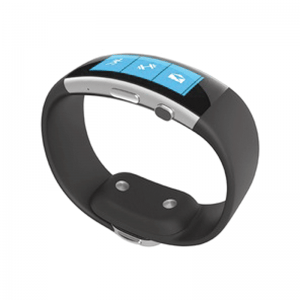
Demand Continues to Soar for Mobile and Wearable Technology
Always Connected
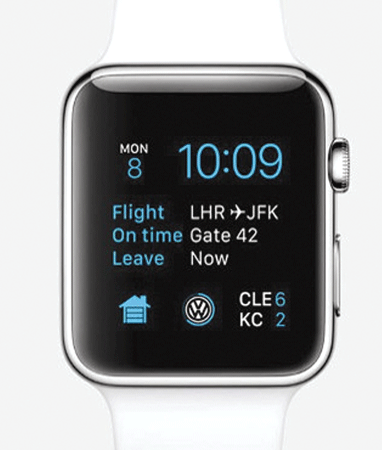
Apple Watch OS2
An on-the-go society demands on-the-go technology, and the array of smartphones, wristband health sensors, and tablets only continues to expand as the major players compete for their share of a growing pie. In its annual look at some of the hottest tech items available, BusinessWest focuses this year on those mobile devices, which are connecting more Americans than ever, 24/7, to all the data they could possibly want.
In an increasingly connected world, mobile technology continues to advance in ways both predictable and surprising, with the final market potential still unclear.
Take the newest iteration, the ‘wearable tech.’ A recent Forbes study reported that 71% of 16- to 24-year-olds either use or want wearable tech, which includes the Apple Watch, the Fitbit, and the Microsoft Band. Those products are where BusinessWest begins its annual look at the most popular and best-reviewed technology available, with a focus this year on mobile devices.
Apple is banking on continuing demand by improving its Apple Watch OS2 ($339), which Digital Trends calls “a piece of wearable tech that feels friendly and has a little bit of quirky character about it. It’s not without its issues, but they’re not too bad. The effort to learn the interface feels worth it to us.”
CNET calls the product, which packs the apps of a smartphone into a small package that fits on the wrist, “a beautifully constructed, compact smartwatch. It’s feature-packed, with solid fitness software, hundreds of apps, and the ability to send and receive calls via an iPhone.” However, it continues, the battery doesn’t last much more than a day, and the interface can be confusing.
Still, Digital Trends notes, “the world of wearable tech has been crying out for a product that engages people — something that operates as a companion device to our phone, but also goes a step further. For Apple, that step was using it to connect people in unusual, fun ways.”
Go HERE for a chart of area telecom/voice/data providers
As Apple Insider explains, initial response to the Apple Watch has promoted competition in the marketplace from upstarts like Pebble, which is offering a new model starting at $250 — almost $100 cheaper than the Apple Watch — in addition to models above and below that price point.
Many consumers love wrist-worn devices for their health-tracking capabilities, a category currently dominated by Fitbit. “I think back to when fitness wearables first emerged — devices like the Fitbit — and wonder, what made them so great? Why did people get so excited?” CNET’s Scott Stein asks. “Was it really the fitness, or was it the idea of turning fitness-based into something fun?”
He noted that the devices counted steps like their pedometer predecessors, but made a game of it — hit a goal, get a reward; share progress with friends and compete. “Gamification, a catchphrase a few years ago, is exactly what these [devices] provided: they’re carrots on a stick to motivate exercise.”
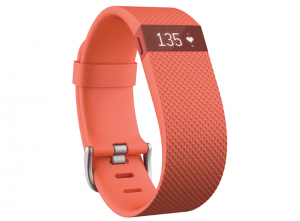
Fitbit Charge HR
That said, he likes what he sees in the Fitbit Charge HR ($139), which adds heart-rate tracking to the mix and syncs all data to the user’s smartphone. “The more expensive $250 Fitbit Surge does practically the same things, but adds a larger watch display and can track runs via standalone GPS.”
But, while $150 for the Fitbit Charge HR is a good price for a full-featured device, Stein adds, “in practice, something about the Charge HR feels a step short of exciting. It’s how Fitbit handles heart rate. It’s how it feels to wear. And, it’s how useful — or not — I found the addition of heart rate to be in my daily routine. It’s one of the best wrist-worn heart-rate trackers out there, but it’s not the complete slam-dunk fitness band I expected it to be. It is, however, the best Fitbit band currently available.”
Microsoft is a player in this field as well, and Yahoo’s David Pogue calls the just-released Microsoft Band 2 ($250) “a smartwatch with more sensors and fitness-monitoring capabilities than anything else you can buy,” from original features like a GPS antenna to track runs or bike rides, a heart-rate monitor, UV light detectors, and a skin-temperature sensor, to new additions including a barometer for measuring elevation (a bonus for hikers and climbers) — 11 sensors in all, in fact.
It’s not for everyone, however; Pogue declares the Band the winner for serious exercisers, but says the Fitbit Charge HR is better for the all others — those who aren’t hardcore about exercise but could benefit from gentle reminders and motivators.
Smartphones Everywhere
Of course, smartphones remain the go-to mobile device for most Americans, with 64% of all adults and a whopping 85% of the 18-29 age group among their users, according to the Pew Research Center.
PC Advisor notes that fierce competition in the smartphone market means there’s a quality device for everyone at just about every price point — and consumers are typically happiest with the operating systems they are comfortable with.
“Although there are others around, it’s best to stick with the big names, including iOS, Android, Windows Phone, and potentially BlackBerry. If you’re already using one, then it might be best to stay in that camp — especially if you’ve invested time and money in its apps. However, it’s not difficult to switch, so you should consider them all.”
Design will come down to personal taste, the site adds, and most of the top smartphones now have a very thin and light chassis. “The best smartphones typically use premium materials like glass, aluminum, or even steel, and on this front you’re best off trying a phone out in the flesh to see whether it feels good for the size of your hand.”
Despite the greater competition, most of the tech press still places Apple’s iPhone and Samsung Galaxy atop their lists of best phones.
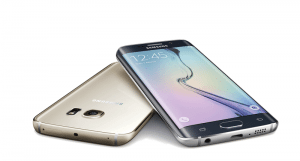
Samsung Galaxy S6
For example, TechRadar calls the Samsung Galaxy S6 ($499) “a brilliant phone that shows Samsung still has what it takes.” An improvement from the Galaxy S5, the latest edition boasts improved camera performance and audio quality, and the sharpest video display on the market.
In addition, “the design is finally something we’re pleased to hold in our hand, rather than the plastic cheapness of last year,” TechRadar notes, and “it’s actually extended its lead at the top thanks to some amazing price drops — so you can now get the best phone on the market for an incredibly low price these days. A no-brainer.”
PC Advisor piles on the praise as well, calling the Galaxy S6 the best Android phone of 2015. “It’s fast, it’s well built, it has a gorgeous screen, and the software isn’t overly intrusive. The fingerprint scanner is vastly improved, the heart-rate scanner a potential draw for some users, and the wireless- and fast charging welcome inclusions.”
But Apple’s iPhone 6S Plus ($499) tops many rankings as well. CNET praises the latest version’s improved speed, better camera, always-on Siri, pressure-sensitive display, longer battery life, and bigger, higher-resolution screen — all improvements over the 2014 model. In fact, the screen size has grown so much that some people might consider it too bulky. “The iPhone 6S Plus has a few key advantages that give it an edge for serious iPhone users, but its big body may not fit for a lot of people.”
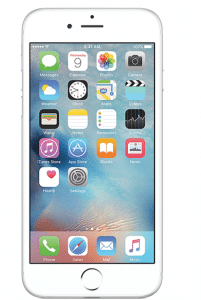
iPhone 6S Plus
Meanwhile, Phone Arena says it’s not surprising that the iPhone 6 is the world’s bestselling smartphone, citing the 3D Touch display and Live Photos as desireable improvements, as well as an improved system chip and better battery life.
“Put in simple words, the new iPhone has a much faster processor and memory. It also comes with a new, 12-megapixel camera that now is able to capture a more detailed images than before and records video in the trendy 4K resolution, plus it supports new slo-mo options. Add to this the rich iOS ecosystem that continues to secure the best apps and games first, and one starts to understand the huge appeal of the iPhone 6s.”
Still, Apple and Samsung have some competition in the market. PC Advisor offers praise for Sony’s Xperia Z5 ($349), which comes with an aesthetically improved rear cover and adds a fingerprint scanner, but keeps much of its previous design.
“Once again, the camera is great, but it’s tough competition out there, and arriving late in 2015 means rivals are now available for a decent chunk less,” the site explains. “Once the price drops, which it will, this will be a great option for those of you looking for a waterproof flagship with a Micro-SD card slot.”
A Bigger Canvas
Smartphones are far from the only tech battlefield, however. The tablet market continues to be hotly contested as well. According to TechRadar, Apple still tops the game with its iPad Air 2 ($599) — a remarkable improvement over even the “remarkable achievement” that was the original iPad Air.
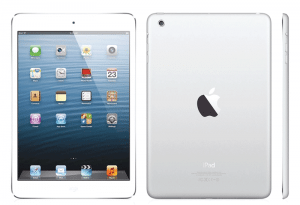
iPad Air 2
“It’s even thinner and lighter than last time around, and to a noticeable extent. The screen is better, with more vibrant colors, it’s more powerful thanks to its A8X processor, and the battery life holds up just as well. It even benefits from Touch ID and Apple Pay, and while these features aren’t as exciting here as they are on phones, they’re still nice to have. In short, the iPad Air 2 really is the complete package, and while you can always find things to niggle about, there are no significant flaws.”
As always, however, Apple has competition. PC Magazine touts the Samsung Galaxy Tab S2 ($399), calling it an improvement over its predecessor in every way, including a thin and light design, upgraded performance, and better-quality camera.
“Do tablets matter anymore?” the site asks? “Samsung would like you to think so. Despite releasing some very large phones recently, the company still believes there’s a home for tablets in a market crowded with enormous phablets. And Samsung’s latest offering, the Galaxy Tab S2, definitely makes the case that, yes, tablets are still very much relevant.”
It’s the same story told in many different ways — Apple continues to set the pace, but its main competitors keep closing the gap. That’s healthy for consumers, no matter which device they prefer to take on the go.
Joseph Bednar can be reached at [email protected]



